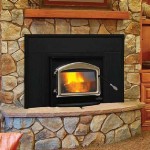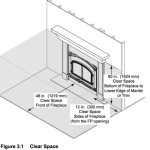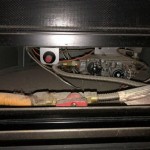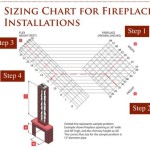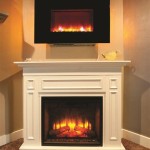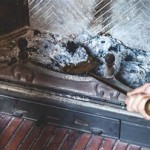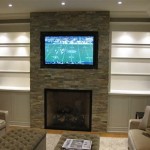Gas Logs For Fireplace Inserts: A Comprehensive Guide
Gas logs provide a convenient and aesthetically pleasing alternative to traditional wood-burning fireplaces. When used in conjunction with fireplace inserts, they offer a controlled and efficient heating solution for residential spaces. Understanding the various aspects of gas logs and their compatibility with fireplace inserts is crucial for making informed purchasing decisions and ensuring safe and effective operation.
A fireplace insert is essentially a fireproof box designed to fit inside an existing fireplace opening. They are typically made of cast iron or steel and are designed to radiate heat more efficiently than a traditional open fireplace. They can burn wood, pellets, or, importantly, gas. Gas fireplace inserts can dramatically improve the heating efficiency of a fireplace, significantly reducing heat loss up the chimney. Combining this efficiency with the visual appeal of gas logs creates a comfortable and energy-conscious home environment.
This article delves into the key considerations regarding gas logs for fireplace inserts, covering the advantages, types, installation, safety, and maintenance aspects. By understanding these factors, homeowners can successfully incorporate gas logs into their fireplace inserts and enjoy the ambiance of a fire without the hassle and mess associated with wood.
Advantages of Using Gas Logs in Fireplace Inserts
Gas logs in fireplace inserts offer numerous advantages compared to traditional wood-burning fireplaces. These benefits extend beyond mere convenience and encompass environmental benefits, energy efficiency, and ease of maintenance.
One of the primary advantages is convenience. Gas logs eliminate the need to source, chop, and store firewood. Starting a fire is as simple as turning a knob or pressing a button, and the fire can be extinguished just as easily. This makes gas logs an ideal option for individuals seeking a hassle-free fireplace experience.
Another significant benefit is improved heating efficiency. Fireplace inserts, by design, minimize heat loss up the chimney, and when coupled with gas logs, this efficiency is further enhanced. Gas logs burn cleanly, producing minimal smoke and creosote, which can lead to chimney fires. This cleaner burning process contributes to a more environmentally friendly heating option and reduces the need for frequent chimney cleaning.
The consistent and controllable heat output of gas logs is also a substantial advantage. Unlike wood fires, which fluctuate in intensity as the wood burns, gas logs provide a steady and predictable heat source. Many gas log sets come with remote controls, allowing users to adjust the flame height and heat output to their desired comfort level. This precise control is particularly beneficial for maintaining a consistent temperature in a room.
Finally, gas logs require significantly less maintenance than wood-burning fireplaces. There is no ash to remove, no need to regularly clean the chimney (though regular inspection is still recommended), and no concerns about insect infestations associated with stored firewood. This reduced maintenance translates to more time enjoying the fireplace and less time spent on upkeep.
Types of Gas Logs Suitable for Fireplace Inserts
Gas logs are available in various materials and designs, each offering its own unique aesthetic and performance characteristics. Selecting the appropriate type of gas log is crucial for achieving the desired look and ensuring compatibility with the fireplace insert.
Ceramic fiber logs are a popular choice due to their realistic appearance and excellent heat resistance. These logs are molded to resemble natural wood and often feature intricate details such as bark patterns and knots. Ceramic fiber logs are lightweight, durable, and capable of withstanding high temperatures without deteriorating. They are also relatively inexpensive compared to other types of gas logs. However, they tend to be less durable over longer periods and may show wear and tear more readily.
Refractory cement logs are another common option. These logs are made from a denser material than ceramic fiber logs, resulting in a more substantial and realistic feel. Refractory cement logs also tend to radiate heat more effectively, providing a more consistent and comfortable warmth. While they are generally more expensive than ceramic fiber logs, they offer increased durability and longevity. The density of refractory cement also contributes to a more realistic burning sound as the gas flows through the log set.
Vented gas logs are designed for use in fireplaces with a functioning chimney. They produce a larger, more realistic flame and provide a more traditional fireplace experience. However, they also vent a significant amount of heat up the chimney, making them less energy-efficient than vent-free gas logs. Vented log sets must be installed in a fireplace with a fully operational flue and damper system to ensure proper ventilation and prevent carbon monoxide buildup.
Vent-free gas logs, also known as ventless gas logs, are designed for use in fireplaces without a functioning chimney or with a sealed flue. They burn more efficiently than vented gas logs, retaining more heat within the room. Vent-free gas logs are equipped with oxygen depletion sensors (ODS) that automatically shut off the gas supply if the oxygen level in the room drops to an unsafe level. While they are more energy-efficient, vent-free gas logs produce a smaller, less realistic flame and may generate a slight odor, particularly when first used. Careful attention must be paid to room size and ventilation requirements when using vent-free gas logs.
The choice between vented and vent-free gas logs depends on the specific fireplace setup, desired aesthetics, and heating needs. Careful consideration of these factors will ensure a safe and satisfying fireplace experience.
Installation, Safety, and Maintenance of Gas Logs in Fireplace Inserts
Proper installation, adherence to safety guidelines, and regular maintenance are crucial for ensuring the safe and efficient operation of gas logs in fireplace inserts. Neglecting these aspects can lead to safety hazards, reduced performance, and costly repairs.
Installation should ideally be performed by a qualified professional with experience in gas appliance installation. A professional installer will ensure that the gas log set is properly connected to the gas supply, that the burner is correctly positioned within the fireplace insert, and that all safety features are functioning as intended. Improper installation can lead to gas leaks, carbon monoxide buildup, and potential fire hazards. If a homeowner chooses to install the gas logs themselves, they must strictly adhere to the manufacturer's instructions and local building codes.
Safety is paramount when using gas logs. Carbon monoxide detectors should be installed in the vicinity of the fireplace and tested regularly. It is essential to ensure that the fireplace insert and gas logs are properly vented to prevent the buildup of carbon monoxide, which is a colorless and odorless gas that can be fatal. The damper should be fully open when using vented gas logs to allow for proper ventilation. For vent-free gas logs, it's necessary to follow the square footage guidelines from the manufacturer to ensure adequate oxygen in the room. Never use a vent-free gas log in a confined space or bedroom.
Regular maintenance is essential for prolonging the lifespan of gas logs and ensuring their continued safe operation. At least once a year, the gas log set should be inspected for signs of damage or deterioration. Clean the logs with a soft brush to remove any dust or debris that may have accumulated. Check the burner for any blockages or obstructions and clean it as needed. Inspect the gas line and connections for leaks, using a soap and water solution to identify any bubbles. If any leaks are detected, immediately shut off the gas supply and contact a qualified professional for repair.
The fireplace insert itself should also be regularly inspected and maintained. Clean the firebox to remove any soot or debris that may have accumulated. Check the flue for any obstructions and have it professionally cleaned every few years to prevent chimney fires. Ensure that the damper is functioning properly and seals tightly when closed to prevent heat loss when the fireplace is not in use.
By following these installation, safety, and maintenance guidelines, homeowners can enjoy the warmth and ambiance of gas logs in their fireplace inserts with confidence and peace of mind. A proactive approach to safety and maintenance will ensure a safe, efficient, and enjoyable fireplace experience for years to come.

The Top 3 Reasons To Choose A Gas Insert Over Log Set Hearthside Hearth Blog

Gas Logs Vs Inserts What To Know Home Hearth Outfitters

How Do Gas Logs Work Hocon

Fireplace Insert Guide Fireplaces Direct Learning Center

Gas Fireplace Inserts The Place Fairfield

Napoleon Gl24e Vented Gas Log Set 24 Inch

Why Is It Important To Get My Gas Fireplace Logs Clean Regularly

Real Fyre Gas Logs Fireplace Insert Fergus

Gas Logs Vs Wood Burning Who Wins Vertical Chimney Care

Propane Fireplace Inserts Gas Log Sets Tunkhannock Pa Ace Robbins

